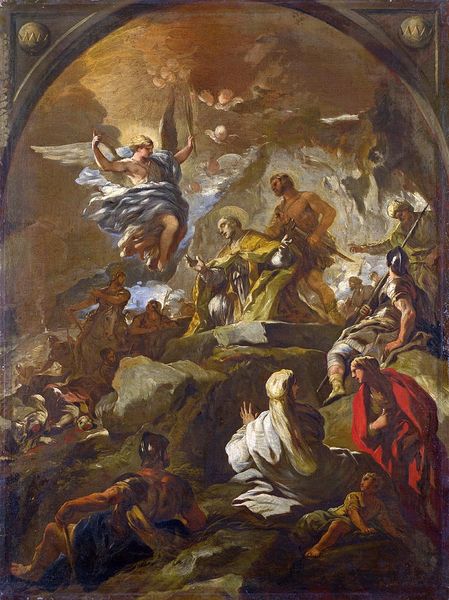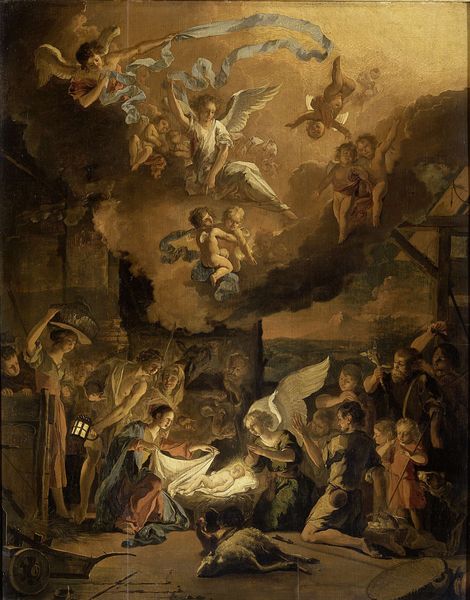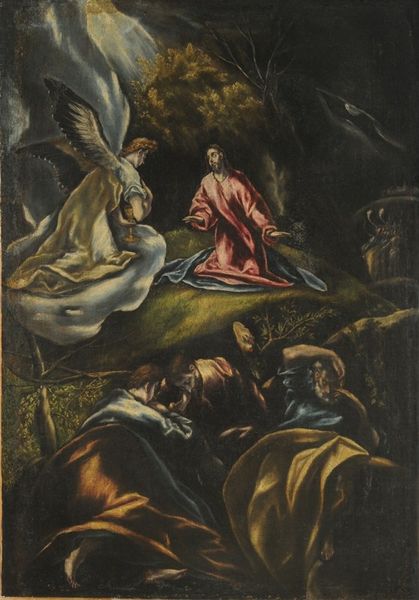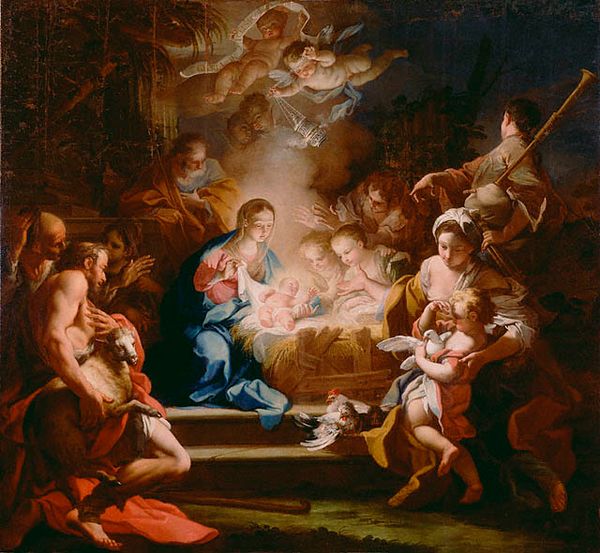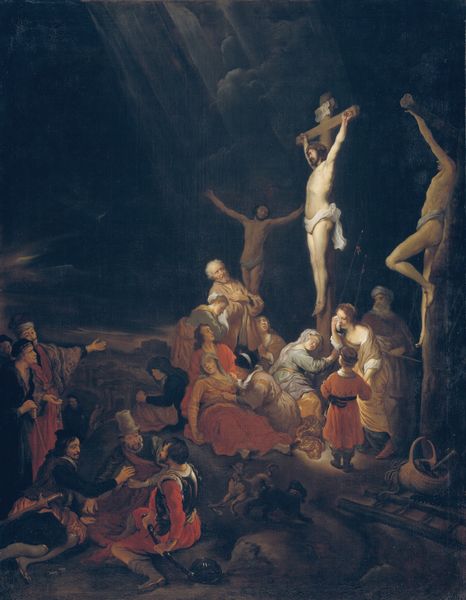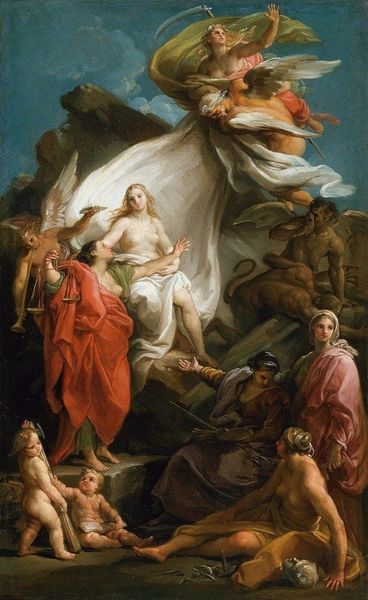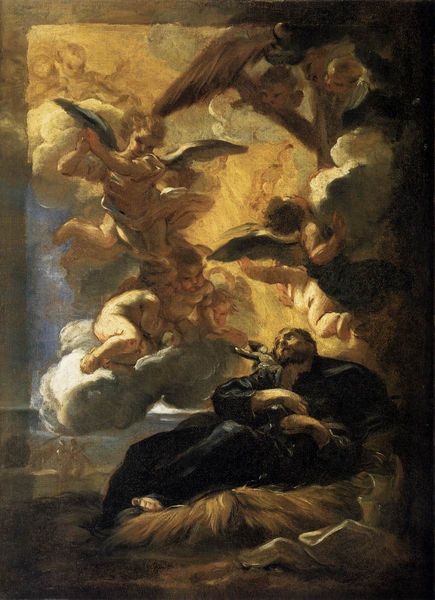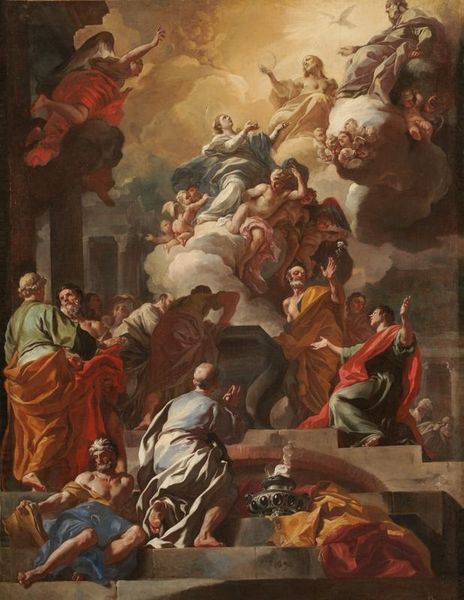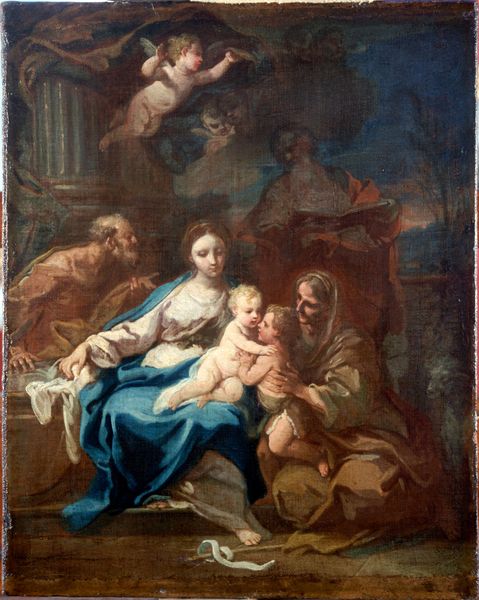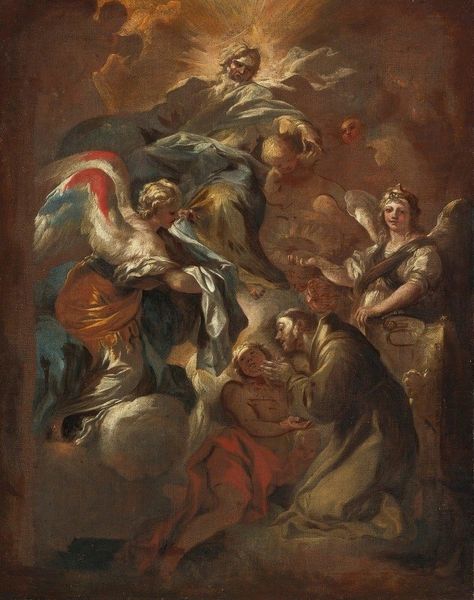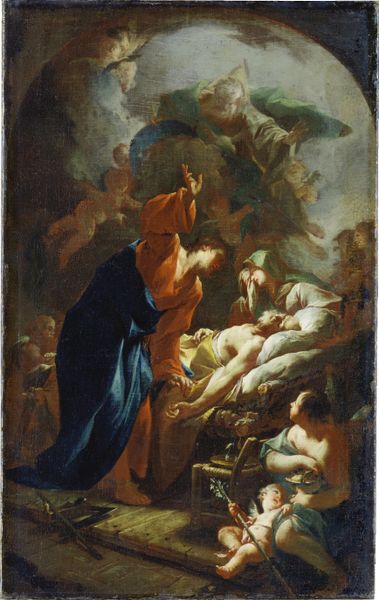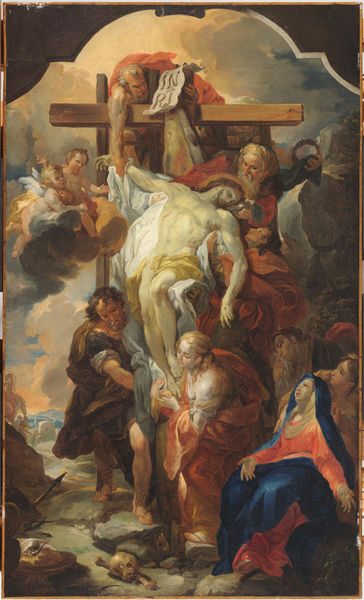
painting, oil-paint
#
allegory
#
baroque
#
painting
#
oil-paint
#
figuration
#
oil painting
#
chiaroscuro
#
history-painting
#
portrait art
Copyright: Public domain
Editor: We're looking at "The Three Maries at the Tomb," an oil painting. It appears to be from the Baroque period. The scene is really dramatic, especially with that bright light emanating from the tomb. What historical context can you share about how it might have been received? Curator: Baroque art often served as a powerful tool for the Catholic Church, especially during the Counter-Reformation. This piece, depicting the resurrection narrative, played into that. It was all about emotional intensity, religious fervor, and visually reinforcing doctrine. The theatrical light, the figures’ exaggerated emotions - all meant to inspire awe and faith in the viewer. What role did these kinds of paintings have at the time? Editor: So, it wasn't just art for art's sake, but actively participating in religious and political movements? Curator: Exactly. Artists like Giordano were creating powerful propaganda, shaping public perception and reinforcing institutional power. Consider the intended audience: Did this resonate more with certain social classes than others? Editor: Probably the illiterate who were taught by images since they could not read the scripture. This use of painting to convey specific narratives, it feels different than what we expect art to do today. Curator: Precisely! The modern museum shapes our understanding, but we need to remember the initial intent of works like these, how they were integral to societal and religious structures. Editor: That makes me look at it in a completely new way. Instead of just admiring the technique, I can see its role in shaping beliefs and reinforcing power. Thank you! Curator: And hopefully, this conversation helped you appreciate the multifaceted role art can play in shaping society and culture.
Comments
No comments
Be the first to comment and join the conversation on the ultimate creative platform.
